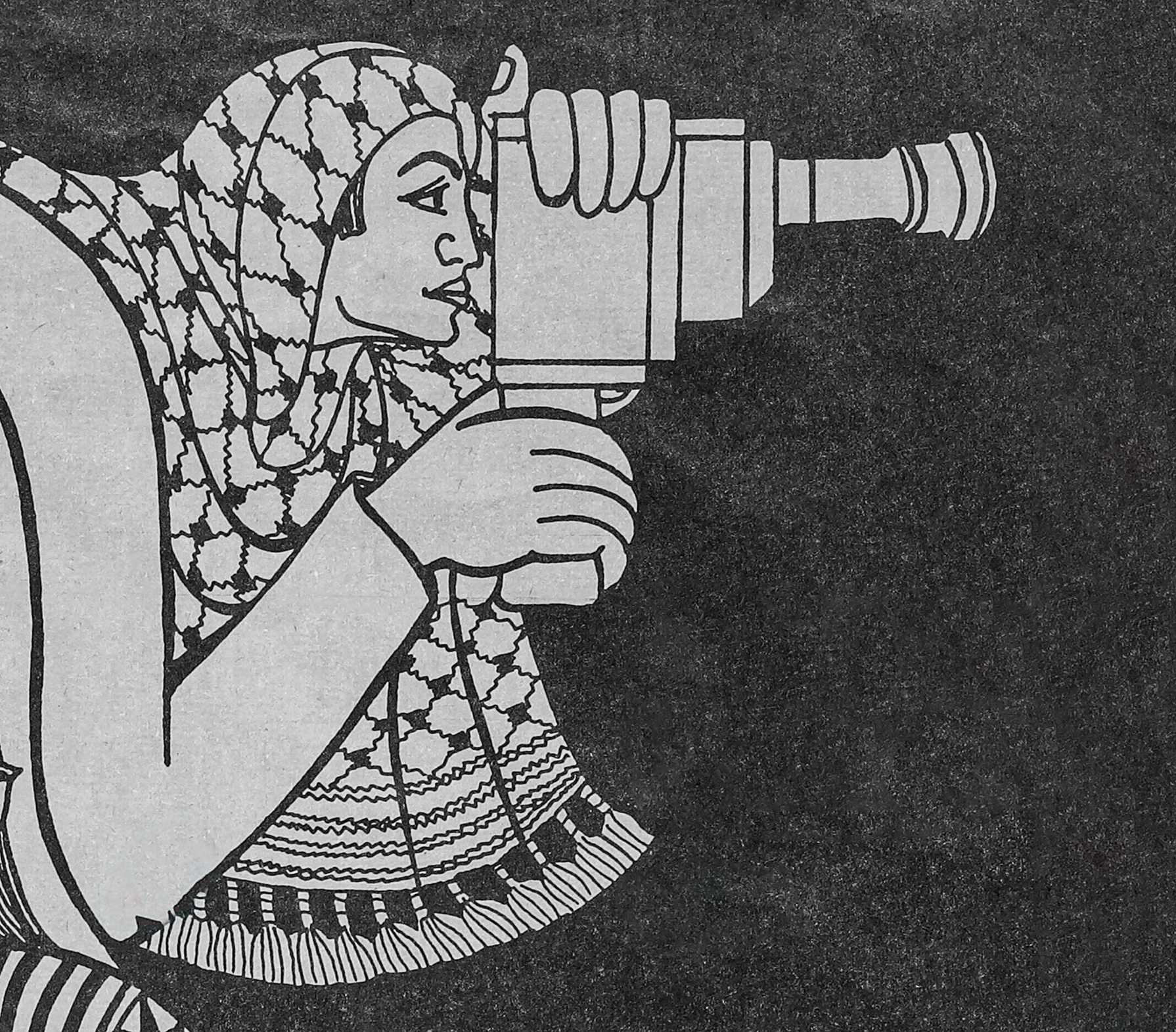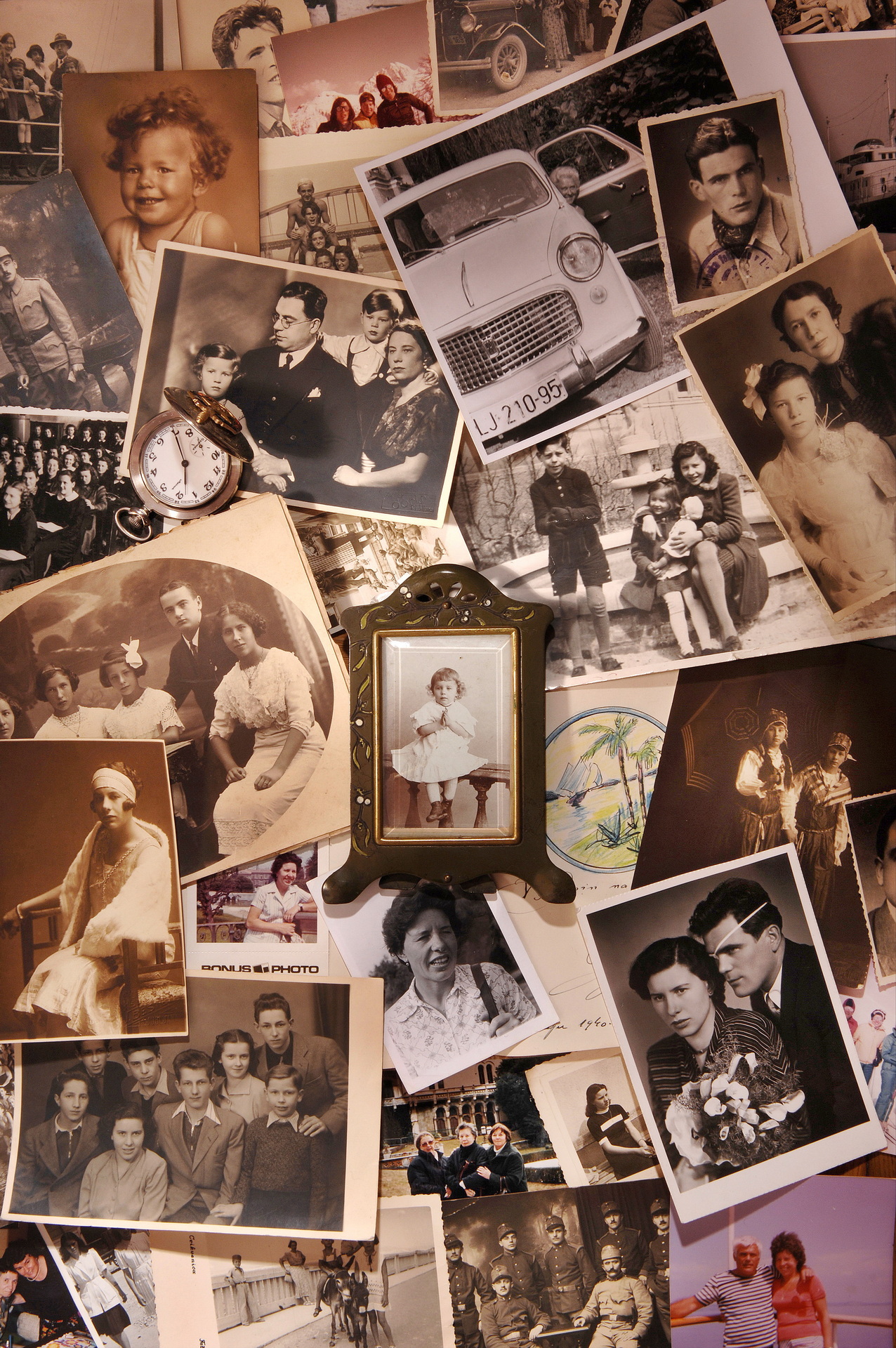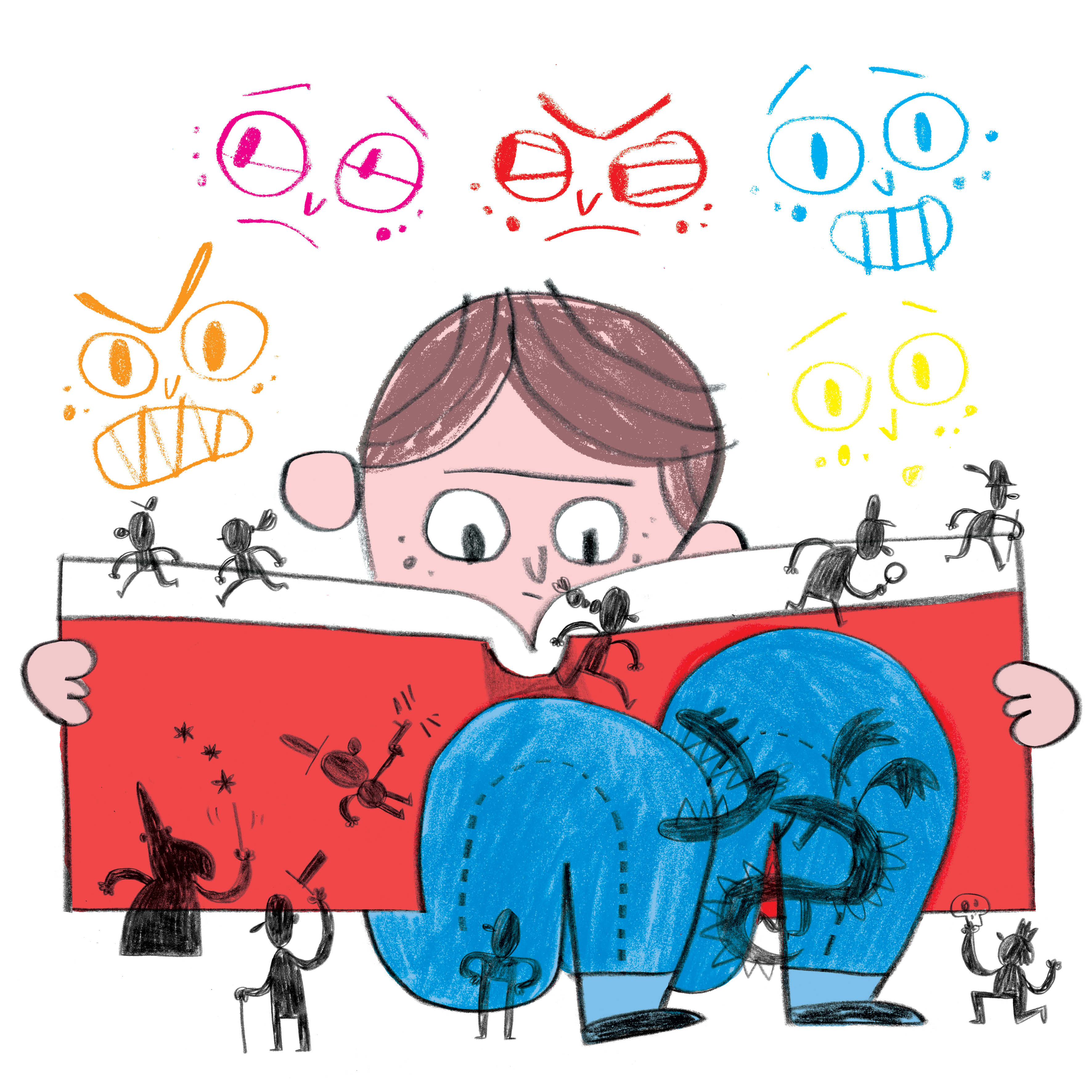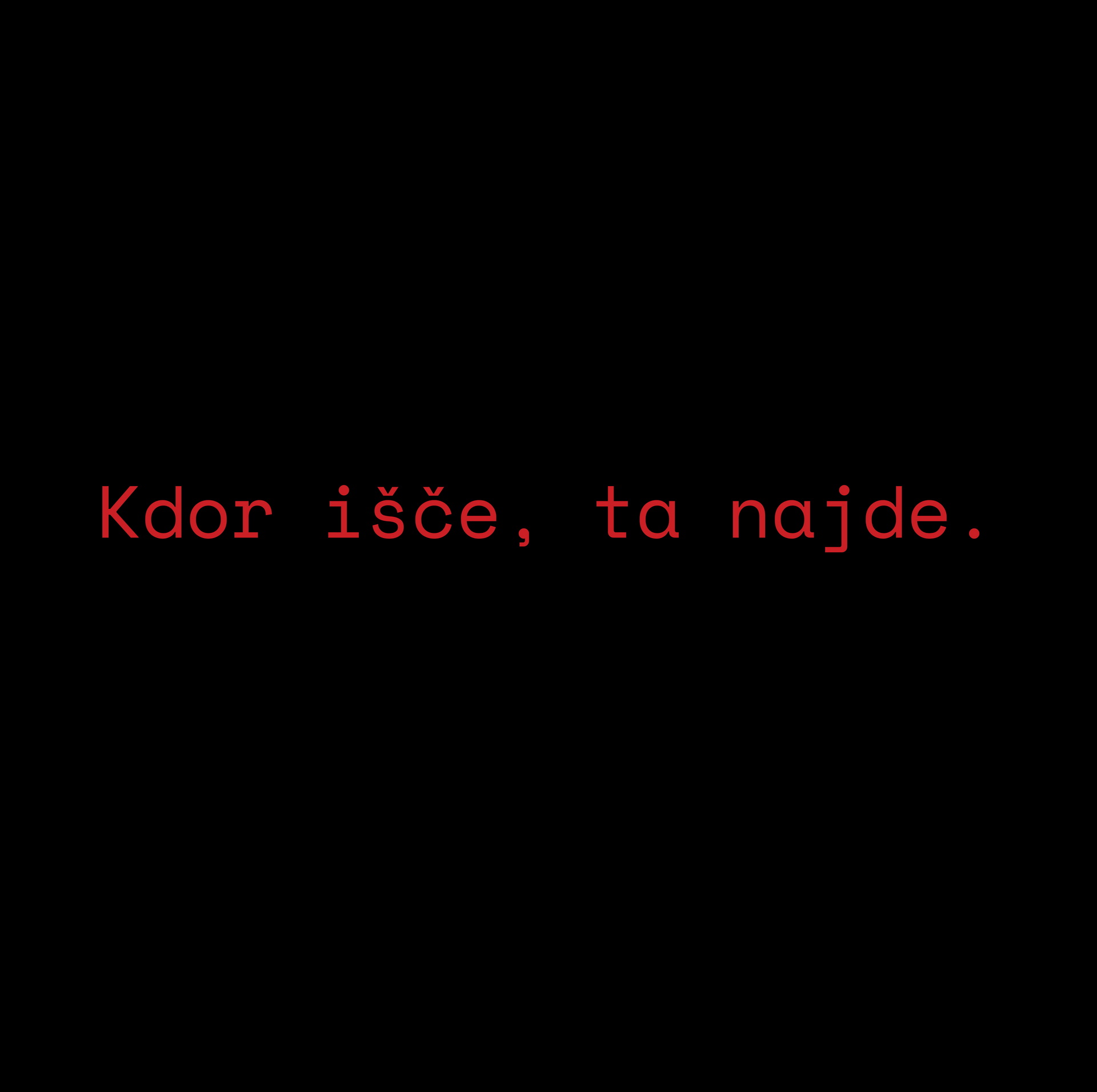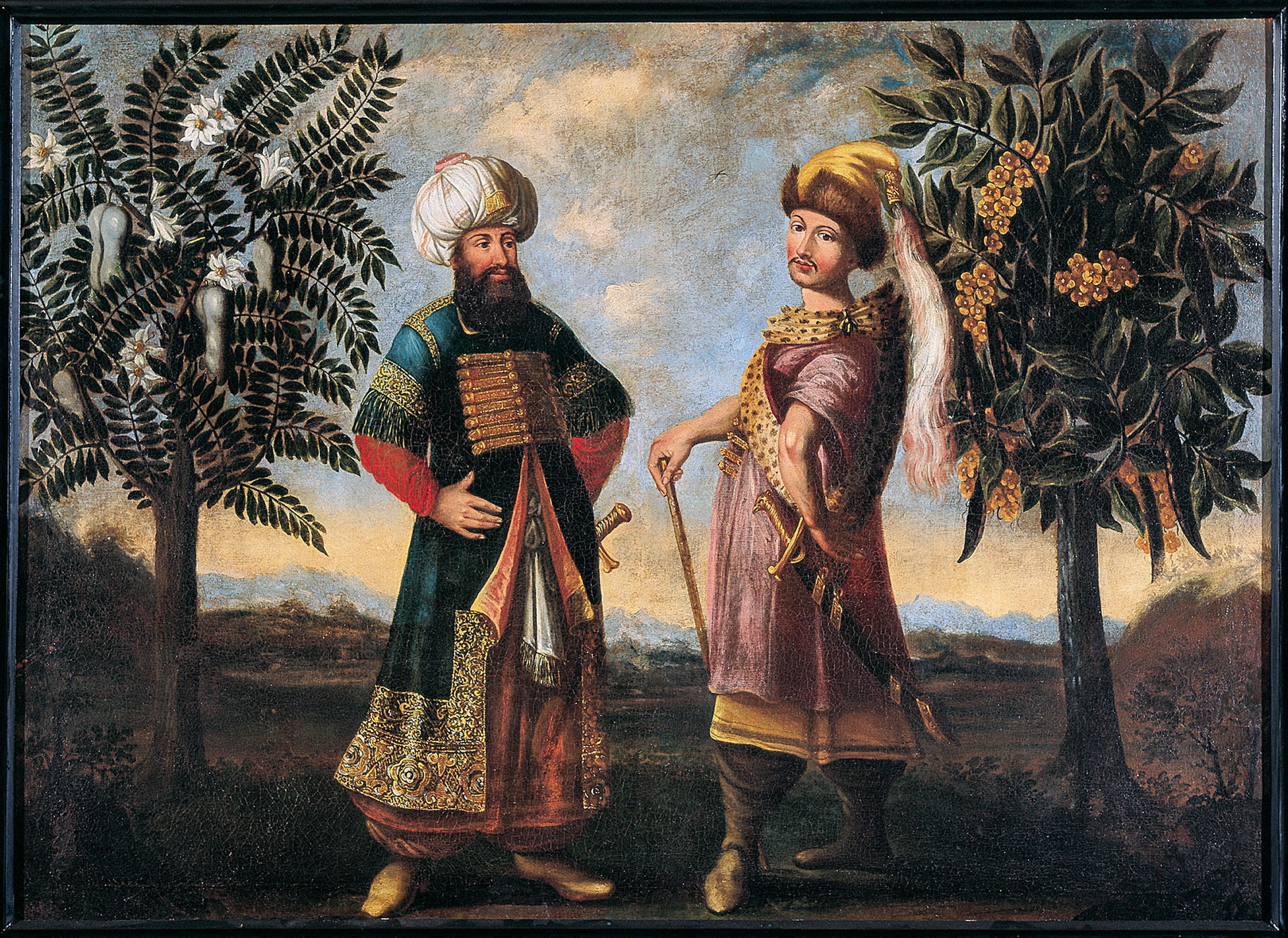November 8, 2023. Opening night of the 36th International Documentary Film Festival Amsterdam (IDFA). Three activists unexpectedly climb onto the stage carrying a banner with the words: From the River to the Sea, Palestine will be Free. Festival director Orwa Nyrabia applauds along with the audience. Fast forward two days and things take a twist. The IDFA issues an apology claiming that Nyrabia had not actually seen the slogan, which they say deviates from the festival’s values. Frequently present at pro-Palestinian protests around the world, the slogan has been critiqued by many as an alleged call for ethnic cleansing and the elimination of Israel. However, its meaning has different interpretations depending on who says it and who hears it. It can also be understood without anti-Semitic connotations as a sign of support for the oppressed Palestinian people in their decades-long struggle for equality, especially urgent now, when they are being massacred in the tens of thousands and blatantly denied access to food and water. The IDFA's hesitation over this controversy and their subsequent effort to distance themselves from the director's immediate response led to a series of symbolic protests – the representatives of Israeli film institutions published an open letter condemning the festival, while the Palestinian Film Institute and some twenty filmmakers from various countries withdrew their films from the programme. In issuing the apology, the IDFA aimed for seeming neutrality and thus positioned themselves in the framework of the dominant position of the Western media toward the war in Gaza, which has been marked by an insufficiently strong condemnation of Israeli aggression. Why does the festival's position on this issue matter?
Film festivals are "places of memory" of a particular kind (Nora 1984). They are cultural and artistic events, but also have social and political authority. As meeting points for filmmakers and audiences – as well as journalists, critics, (film) industry representatives, politicians, members of NGOs – their impact extends far beyond the time and location where they take place. In addition, films with strong festival circulation will usually also enjoy strong cinema distribution and media space. Thus, the narratives that festivals create about the most important issues of the world in which we live reach diverse audiences, far wider than those present at the screenings themselves.
Documentary cinema festivals tend to be less popular than their feature film counterparts, but their impact remains significant due to the tendency of audiences to equate documentary film with reality. Because documentary films draw on images of real people and events, audiences often interpret documentary cinema as a mirror of reality rather than as artistic interpretation. Hence the importance of understanding which version of "reality" film festivals are promoting, especially in times of war when not only territories but people's lives are threatened.
With these considerations in mind, this article presents a brief chronological overview of European film festival propaganda approaches in the context of the territorial conflicts of the twentieth and twenty-first century, which either took place in or affected the European continent, the birthplace of this particular type of cultural event. The text focuses on the Yugoslav space and the Trieste Crisis (1945–1954), a Cold War dispute between Italy and Yugoslavia regarding the northern Adriatic borderlands. The Trieste Crisis, which coincided with the early wave of film festival creation, exposes some of the basic methods of legitimising ideological and territorial demands through festivals, demonstrating how such events can question the political reality in which they take place while at the same time adapting to it.
Diplomacy and (Anti)War Propaganda
Since their establishment, film festivals have proved to be events of geopolitical influence, especially in times leading up to and during international conflicts. The world's first film festival, the "Mostra" in Venice, was launched in 1932 as a venue for the promotion of Mussolini's ideals. France soon followed with the Cannes Film Festival, founded in 1939 in part to counterbalance the Fascist propaganda coming out of the Venetian Lido. However, the outbreak of World War II interrupted it on its first day. The Mostra, conversely, was not immediately disturbed by the war. Suspended only in 1943, its programme was dominated by films from the Axis countries, indirectly supporting their war aims. This is the earliest example of a two-way influence: the war context affected the programme, and, conversely, by not resisting it, the festival also legitimised that context with its programme.
In times of post-war reconstruction, festivals became regular events, the first iterations of the Cannes, Locarno and Karlovy Vary festivals taking place in 1946. They were followed by Edinburgh, Brussels (1947), Berlin (1951), Mannheim-Heidelberg (1952), San Sebastian (1953), Oberhausen, Pula (1954), and Leipzig (1955). As the unfolding Cold War imposed the increased need for (cultural) diplomacy, festivals quickly become arenas of political confrontations and rapprochements, as is evident from their programming policies and the filmmakers’ circulation at that time. Some were even founded with a Cold War agenda. The short film festival in Oberhausen (1954), a small industrial town in West Germany, was created in protest against the bloc division. It invited avant-garde cineastes from all over the world, with a special emphasis on new forms and trends, defying the boundaries imposed by the post-war cultural and political alliances. As Dorothea and Ronald Holloway noted, it provided proof that we lived in "one" world (O is for Oberhausen. Weg zum Nachbarn 1979).
The Cold War (and territorial) agenda was also behind the establishment of the Pula Film Festival (1954). A national, Yugoslav film gathering, started amid the conflict with Italy in the heart of the disputed territory, it symbolically reaffirmed its non-Italian identity (Jelenković 2023). The archival documents of the European festivals active at the time of the Trieste Crisis, unveil a range of attempts by various festival and political structures to impose conflicting ideas on just boundaries. At that time, the selection process was carried out through state institutions. The Cannes Festival, for example, sent invitations through the Ministry of Foreign Affairs – not to selected filmmakers, but to countries. Their institutions would then choose their own representatives guided by the number of titles indicated in the invitation. Such a process inevitably reflected the interests of both the host and invited countries, and they were sometimes opposed to one another. An example of this occurred when the Yugoslav Committee for Cinematography promoted the documentary Julian March (Radoš Novaković, 1946) about the disputed borderland to the first Cannes Festival. However, Yugoslav participation was not in France’s interest at the time – the invitation was actually sent by mistake, and the documentary was ultimately rejected under the pretext that the application arrived too late (Jelenkovic 2022). This changed only in 1949, when the war film On Our Own Land (France Štiglic, 1948) was shown. The film portrays the northern Adriatic region as a homogenous Slovenian ethnic space, which is most obvious in the scene where a Slovenian woman takes off her shoes before her execution because she wants to take her last steps "on her own land". Still, typical of socialist production, the division between good and evil is organised along ideological rather than national lines, sending a message about the unity of all justice-loving people, regardless of their nationality, around the common goal of establishing a better society within fair borders. A completely different impression is created in the two most important Italian films about the borderland: The Suffering Town (Mario Bonnard, 1949) and Hearts Without Borders (Luigi Zampa, 1950). Portraying Italian families under pressure to decide on which side of the imposed border they would live, they both depict the northern Adriatic region as an Italian ethnic space, culturally and politically usurped by Slavs. However, during the Trieste Crisis, Italy enjoyed greater international support than Yugoslavia, and thus had less of a need to promote these films worldwide. This is obvious from their minor festival circulation, which made their influence insignificant at the time.
The low festival visibility of the northern Adriatic territorial issue continued after the region's division in late 1954, but now the topic also moved to the margins of Yugoslav film production. In the mid-1950s, Yugoslavia positioned itself as a partner of both the East and the West. Yugoslav film institutions therefore diverted their attention from the northern Adriatic issue to the promotion of Tito's policy as a successful alternative to the Eastern Bloc. Somewhat unexpectedly, this is obvious even from the circulation of the anathematised black wave films of the 1960s/early 1970s. Because they addressed the system's shortcomings, their way to the audience was often blocked in Yugoslavia itself. However, the black wave did travel abroad, enjoying major festival success in Oberhausen, Venice, Berlin, and Cannes. This paradoxical situation suited the local censors – having such critical films screened internationally confirmed that Yugoslavia was, allegedly, a country of free speech. Silence on the part of Italian film institutions on the dispute over the border with Yugoslavia was motivated by the desire to avoid conflict with Tito and the general lack of interest in this historical episode. From the mid-1950s to the end of the Cold War, festival programming related to contemporary territorial conflicts referred mainly to ones outside of Europe (Indochina, Vietnam, Algeria), reflecting the reality of the armed conflicts of that period.
As regards the European continent, the mutual impact of festivals and wars again became noteworthy in 1990s Yugoslavia. The situation in the country caused both the cancellation and establishment of festivals. The Pula Film Festival was interrupted in 1991 due to the start of the war in Croatia. The Sarajevo Film Festival was founded in 1995 to encourage the reconstruction of civil society after the war in Bosnia. In Serbia, sanctions prevented the acquisition of foreign films, leading to the cancellation of FEST (1993–1994). The only festival that experienced no interruptions due to the war was the Yugoslav Documentary and Short Film Festival in Belgrade. However, in 1992 it was reduced to participants from Serbia and Montenegro, before eventually admitting films from the Serbian part of Bosnia-Herzegovina into the national competition. When this happened, the programme became a relatively accurate mirror of what was commonly seen as the Serbian national space, and the festival essentially abandoned its Yugoslav identity. International sanctions during that period not only prevented foreign films from entering Serbia, but also the screening of Serbian films abroad. For this reason, Emir Kusturica's Golden Palm for Underground (1995) provoked extensive media coverage – the film had not only garnered the main award of one of the world's most prestigious festivals, but this was also the first major international exhibition of a Serbian film after three years of isolation. The breakup of Yugoslavia, parenthetically, also favoured renewal of interest in the issue of the north Adriatic issue and the Trieste Crisis, as it triggered the re-examination of the communists’ (post)war actions. The strengthening of the Italian right wing in the mid-1990s also contributed to an increase in interest in this theme, due to its capacity to provoke nationalistic sentiments. In such an atmosphere, the films Heart without Borders and City of Pain were restored and re-released (2000 and 2008 respectively). This enabled the renewal of their festival life, and with it, of the cinematic promotion of the idea of the northern Adriatic as an autochthonous Italian area.
By the time the war in Ukraine started (2014), festival programmes were primarily determined by their organisers as governments generally had not interfered in the selection process since the fall of the Berlin Wall and the opening of the Yugoslav borders. Moreover, festivals in western Europe appear to be united in their condemnation of the invasion of Ukraine: a number of special programmes on the subject are regularly organised, Ukrainian works are among films screened and awarded, and film crews often come in person. One common form of support in this context is the boycott of Russian filmmakers. Objecting to their complete exclusion, the Venice, Cannes, and Berlin festivals announced in March 2022 that they would not boycott independent Russian filmmakers, but only delegations and those who collaborate with official institutions. In reality, however, some form of institutional support from the country of origin is generally a prerequisite for a film being made. This is confirmed by the fact that only three such films have been screened at these three festivals since that decision: Tchaikovsky's Wife (Cannes, 2022), The Cage is Looking for a Bird (Berlin, 2023), and Grace (Cannes, 2023).
And, what about Palestine?
"Words matter," wrote representatives of the Israeli film industry in their letter reacting to the appearance of the “river to the sea” slogan at IDFA's opening. Indeed, words do matter. The ideas generated by film festivals have a far-reaching and long-term resonance. That is why their programmes and guests, as well as the condemnation or support they give to certain policies in wartime, are more than just a curating issue, but also an ethical and political one. Bearing in mind the past performance of European festivals during times of conflict, we might ask ourselves whether in coming seasons of Cannes, Venice and Berlin, we will be watching retrospectives of famous Palestinian directors such as Annemarie Jacir or Elia Suleiman. Will they get the same support as their Ukrainian colleagues did when their country was brutally attacked? Will the Palestinian flag be flown at the Lido? Will the leading film festivals confirm that the new war in the Middle East concerns us all, that we all live in "one world"? This remains an open question. In anticipation, spectators would be wise to observe festivals critically, aware of the influence they have, but also of the influence that is exerted upon them, and to remember that they represent powerful links in the process of construction of cultural memory on the most important issues of our past and present. And, also, our future.
* This article was developed within the research project CBA TRIESTE (The Cinematic Battle for the Adriatic: Films, Frontiers, and the Trieste Crisis, 1945–1954), which has received funding from the European Union's Horizon 2020 research and innovation programme under the Marie Skłodowska-Curie grant agreement No. 101020692 (MSCA-IF-EF).











